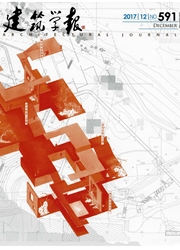
欢迎您!东篱公司
退出

 中文摘要:
中文摘要:
以厦门鼓浪屿作为代表性案例,在地理信息系统平台上通过对于社区居民的记忆空间采集和对于游客活动的GPS追踪数据进行叠合;实现了对于社区记忆场所的现状分类,并进一步提出优化保护建议;这一研究路径为新技术条件下的记忆场所保护展现了新的可能。
 英文摘要:
英文摘要:
This study chooses Gulangyu, Xiamen as the case and applied Geographic Information System to overlay local residents' memorable community spaces recorded by cognitive mapping and tourist arrivals' behavior intensity recorded by Global Positioning System tracking. The community space can be identified and classified, which helps to propose further optimization strategies. This study sheds light on a workable approach to protect community spaces with collective memory.
 同期刊论文项目
同期刊论文项目
 同项目期刊论文
同项目期刊论文
 期刊信息
期刊信息
